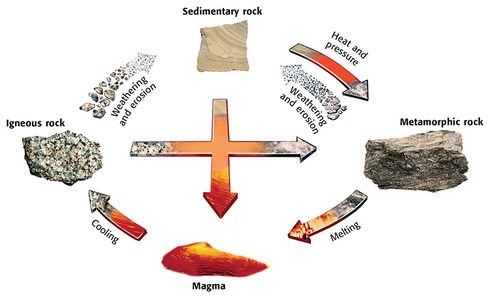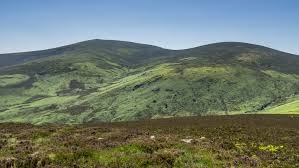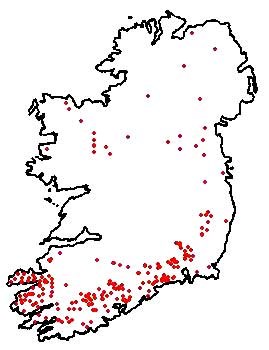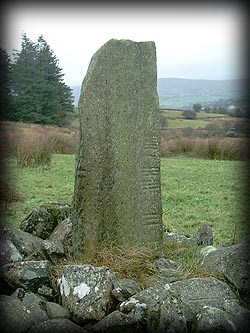What is Granite?
Granite is a light-colored igneous rock with grains large enough to be visible with the unaided eye. It forms from the slow crystallization of magma below Earth’s surface. Granite is composed mainly of quartz and feldspar with minor amounts of mica, amphiboles and other minerals. This mineral composition usually gives granite a red, pink, gray or white color with dark mineral grains visible throughout the rock.
 How is Granite formed?
How is Granite formed?
Granitoids are a ubiquitous component of the crust. They have crystallized from magmas that have compositions at or near a eutectic point (or a temperature minimum on a cotectic curve). Magmas will evolve to the eutectic because of igneous differentiation, or because they represent low degrees of partial melting. Fractional crystallisation serves to reduce a melt in iron, magnesium, titanium, calcium and sodium, and enrich the melt in potassium and silicon - alkali feldspar (rich in potassium) and quartz (SiO2), are two of the defining constituents of granite. This process operates regardless of the origin of the parental magma to the granite, and regardless of its chemistry. However, the composition and origin of the magma which differentiates into granite, leaves certain geochemical and mineral evidence as to what the granite's parental rock was. The final mineralogy, texture and chemical composition of a granite is often distinctive as to its origin. For instance, a granite which is formed from melted sediments may have more alkali feldspar, whereas a granite derived from melted basalt may be richer in plagioclase feldspar. It is on this basis that the modern "alphabet" classification schemes are based. Granite has a slow cooling process which forms larger crystals. See illustration below:

Wicklow Granite:
The Wicklow Mountains are primarily composed of granite (as shown in red below) surrounded by an envelope of mica-schist and much older rocks such as quartzite. They were pushed up during the Caledonian orogeny at the start of the Devonian period and form part of the Leinster Chain, the largest continuous area of granite in Ireland and Britain. These granite mountains owe much of their present topography to the effects of the last ice age, which deepened the valleys and created corrie and ribbon lakes.

The Wicklow Mountains experience a temperate oceanic climate with mild, damp summers and cool, wet winters. The dominant habitat of the uplands consists of blanket bog, heath and upland grassland. The uplands support a number of threatened bird species, including merlin and peregrine falcon. The valleys are a mixture of coniferous and deciduous woodland.
The Wicklow Mountains continue to be a major attraction for tourism and recreation. The entire upland area is designated as a Special Area of Conservation and as a Special Protection Area under European Union law. The Wicklow Mountains National Park was established in 1991 to conserve the local biodiversity and landscape.
As previously mentioned, the Wicklow Mountains are primarily composed of granite surrounded by an envelope of mica-schist and much older rocks such as quartzite. The oldest rocks are the quartzites (small patch of yellow on map) of the Bray Group that include Bray Head and the Little Sugar Loaf and Great Sugar Loaf mountains. These metamorphosed from sandstone deposited in the deep waters of the primeval Iapetus Ocean during the Cambrian period (542-488 million years ago). Layers of sediment continued to form slates and shales along the ocean floor mixed with volcanic rock pushed up as Iapetus began to shrink by the process of subduction during the Ordovician period (488-443 million years ago). These rocks now underlie the uplifted peneplain of the Vartry Plateau between the Bray Group and the main range.
Iapetus closed up completely at the end of the Silurian period (443-415 million years ago) and the Wicklow Mountains were uplifted during the main phase of the Caledonian orogeny at the start of the Devonian period (415-358 million years ago) when the continents of Baltica and Laurentia collided. The collision pushed up a large batholith of granite, known as the Leinster Chain: this is the largest continuous area of granite in Ireland and Britain and runs from the coast at Dun Laoghaire in County Dublin to New Ross in County Wexford and includes the Wicklow and Blackstairs Mountains.
The heat generated by the collision metamorphosed the slates and shales surrounding the granite into schists which formed an aureole (shell) around the granite. The process of erosion has removed much of the surrounding schist from the mountain tops, exposing the underlying granite.
Some remnants of the schist roof remain on some of the mountain tops, most notably Lugnaquilla. That is close to where you are at ground zero. You are in the Glen of Imaal which has Lugnaquilla as its focal point at the top of the valley. It is the highest mountain in Leinster and the 13th highest in Ireland. Granite topped peaks are rounded, these round granite topped peaks contrast with the sharper schist peaks:
Neighboring mountains- War Hill (granite peak) and Djouce (schist).Shown below

Landscape and Geological changes in Wicklow:
The last major geological event to shape the Wicklow Mountains was the Quaternary glaciation. This is when the ice deepened and moulded the valley of where you are now (the Glen of Imaal). It was changed into the U-shape that you see now. As the ice melted, smaller glaciers were left in corries where moraines now dam lakes such as at the nearby Loughs Bray and Nahanagan. Corries (bowl shaped hollow) without lakes also occur, such as at the North Prison of Lugnaquilla (Visible from parking co-ordinates close nearby) and South Prison of Lugnaquilla (Far side of the mountain from this cache).
Source Link: Wicklow Mountains Geology
Where is Wicklow Granite used?
Granite from the Wicklow Mountains has been used as a material for many buildings in Wicklow and Dublin and beyond. The quarries at Ballyknockan have provided material for buildings such as the Bank of Ireland on College Green in Dublin, Dun Laoghaire lighthouse and Liverpool Cathedral. Similarly, quarries at Glencullen provided stone for such buildings as the G. P. O. on O'Connell Street and the Industry and Commerce building on Kildare Street in Dublin. Barnacullia, on the slopes of Three Rock Mountain, supplied paving stones to Dublin Corporation. The quarry at Dalkey supplied granite for Dun Laoghaire Harbour and the Thames Embankment. Historically though Ogham Stones and standing stones made of granite have been used throughout Leinster and closer parts of Munster as shown in the following map:

Granite Ogham Stones:
Ogham Stones (or Standing Stones) that are located in Leinster were made of this Wicklow granite. This Earthcache has a large example of one of these Granite Ogham Stones here. These granite pillars are single upright slabs of stone projecting vertically from the ground. They date back to around 4,000 years when people were first beginning to use metal - the Bronze Age. Standing stones are a common feature of the Irish countryside. They were erected mainly for ceremonial and ritual purposes, but some were related to burial. Later on, they may have been used to mark routeways and boundaries. Standing stones are usually sited in prominent locations near the summits of hills and on the sides of valleys, they can occur on their own or as a part of a larger prehistoric site. Some smaller upright stones can be inscribed with Ogham - an ancient alphabet consisting of dots and strokes cut along the edge of a stone. Ogham stones date from early Christian times.

Questions to answer at the given co-ordinates and emailed to me:
1. Approx what size (Height and Width) is the Granite Standing stone at GZ?
2. What are the 3 main contents of granite?
3. What is the difference between the peaks of War Hill and Djouce Mountain and why?
4. Name 3 other types of rock found in Wicklow?
The area is maintained and managed by Coillte and the cache is placed in line with the "Leave no Trace" principle.